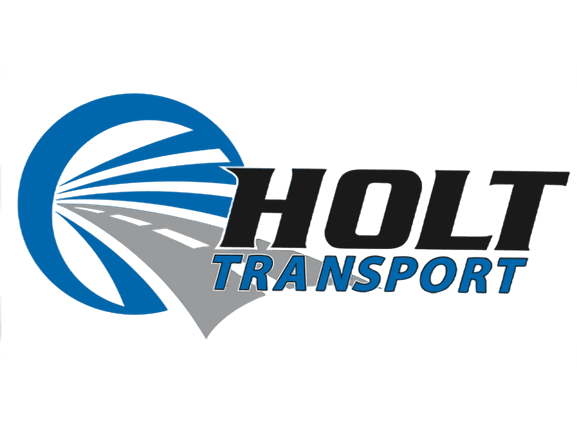October 27, 2023
Do you need to transport a patient who is too sick or injured to walk but isn’t facing an emergency? While stretchers and gurneys are commonly used for patient transportation, there are alternative solutions that may be better suited for the task.
In this blog post, we’ll explore some of these alternatives and provide information about why they might be more appropriate than traditional stretcher or gurney transportation in certain cases.
Overview of Non-Emergency Stretcher Transportation
Non-emergency stretcher transportation is a vital service that allows patients to be transported safely and comfortably between medical facilities or from their homes to medical appointments. Unlike emergency medical transportation, non-emergency transport is for patients who do not require immediate medical attention.
This service is particularly useful for patients who are disabled, have mobility issues, or need to travel a long distance. Non-emergency stretcher vehicles are well-equipped to transport patients who cannot sit in a regular car or public transport.
Highly trained medical personnel are always on hand to monitor patients and ensure their safety during transport. With the help of non-emergency stretcher transportation, patients can receive the medical care they need without having to worry about the stress of transportation.
Types of Non-Emergency Stretcher Options – Stretchers vs. Gurneys
When it comes to non-emergency medical transportation, there are a variety of stretcher options available. Two common choices are stretchers and gurneys. Stretchers are typically used for patients who can sit up or move themselves onto the stretcher, whereas gurneys are designed for patients who are unable to move and require more support.
Both options come with a range of features and can be tailored to suit the patient’s needs. When choosing between stretchers and gurneys, it’s important to consider factors such as the patient’s mobility, the type of medical equipment needed, and the transportation method.
By carefully assessing these factors, healthcare providers can ensure that patients receive safe and comfortable non-emergency medical transportation.
Pros and Cons of Using a Stretcher vs. Gurney for Non-Emergency Transfers
For non-emergency transfers, healthcare providers have a choice between stretchers and gurneys. Stretchers, also known as transport chairs, are typically smaller and more compact, while gurneys are larger and heavier.
Each option has its unique advantages and disadvantages.
Pros and Cons of Using a Stretcher for Non-Emergency Transfers
Pros:
- Mobility: Stretchers are typically smaller and lighter, making them more maneuverable in tight spaces.
- Storage: They require less storage space compared to gurneys.
- Ease of Use: Patients who can sit up or move themselves can easily transition onto a stretcher.
Cons:
- Comfort: They might be less comfortable than gurneys, especially for patients who need to lie flat or for longer journeys.
- Capacity: Stretchers may not have the capacity to hold larger patients or those with specific medical equipment needs.
Pros and Cons of Using a Gurney for Non-Emergency Transfers
Pros:
- Comfort: Gurneys are designed to be more comfortable for patients, especially during long transfers and for those who need to remain in a lying position.
- Support: They offer more support for patients who are unable to move.
Cons:
- Size: Gurneys are larger and heavier, making them less maneuverable and requiring more storage space.
- Transfers: They are more difficult to use for patient transfers, especially for those who can move independently.
Considerations When Choosing Between Stretchers and Gurneys for Non-Emergency Transfers
When selecting between stretchers and gurneys for non-emergency medical transportation, several key factors should be taken into account.
1. Patient’s Condition: The most important consideration is the patient’s physical state. For patients who can sit up or shift themselves, a stretcher might be a suitable choice. However, for patients unable to move or those requiring to lie flat, a gurney is typically more suitable due to its greater support and comfort features.
2. Transport Situation: The specific transfer scenario also plays a vital role in the decision-making process. For routine medical appointments or short-distance transfers, a stretcher’s mobility and ease of use can be advantageous. However, for long-distance transfers or patients with complex medical equipment, a gurney’s larger size and enhanced comfort features may be more appropriate.
3. Storage and Maneuverability: If storage or maneuvering space is a concern, the smaller and lighter stretcher is often a better choice. Gurneys, while offering greater comfort and support, are larger and heavier, requiring more storage space and making navigation in tight spaces more challenging.
4. Cost: The cost could be a decisive factor as well. Gurneys are typically more expensive than stretchers due to their enhanced comfort and support features. Therefore, budget constraints may influence the choice between a stretcher and a gurney.
The Benefits of Using a Professional Trained in Non-Emergency Transfers
Utilizing professionals trained in non-emergency transfers can significantly enhance the patient’s comfort, safety, and overall experience.
1. Expertise: Professionals are equipped with the necessary knowledge and skills to safely handle and transport patients. They understand how to navigate different routes and environments, ensuring minimal discomfort for the patient.
2. Safety: Trained professionals prioritize patient safety, using the appropriate equipment and techniques to prevent falls or injuries during transfer. It is especially crucial for patients with disabilities or mobility issues.
3. Patient Comfort: A smooth and comfortable journey can ease patient anxiety, making the trip less stressful. Trained professionals know how to manage patient comfort effectively, whether it’s adjusting the patient’s position, controlling the temperature inside the vehicle, or providing reassurance during the journey.
4. Efficiency: Utilizing a professional can result in efficient and timely transfers, reducing delays in patient appointments or treatments. It can contribute to better patient outcomes and increased satisfaction.
5. Compliance with Regulations: Professionals are familiar with healthcare regulations and standards, ensuring compliance during transport. It includes patient privacy and rights, infection control measures, and safe handling procedures.
In conclusion, using a professional trained in non-emergency transfers can contribute to a higher quality of care and a more positive patient experience.
About Us
Are you tired of transportation options that struggle to accommodate your special needs yet cost you a lot? If yes, Holt Transport is what you are looking for. We provide non-emergency medical transport at affordable rates. No longer will you have to wait for public transport or travel uncomfortably to your next medical appointment. Whether you require wheelchair access, a gurney alternative, or ambulatory services for patient transportation we have got you covered. Call us at (989) 860-1004 or fill out our contact form to know more.





Share This Post